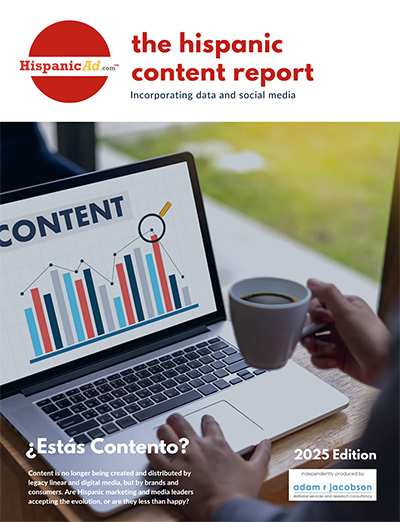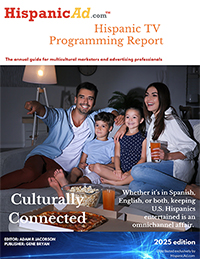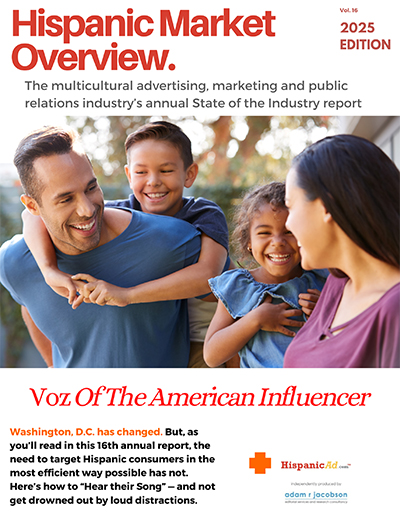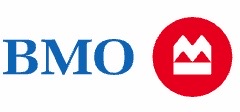Trends
2025 Hispanic Content Report – Available for download for FREE

HispanicAd offers its annual report on key Content, Data & Social usage strategies, along with the importance of using Data strategies to engage the US Hispanic Consumer.
2025 Hispanic TV Programming Report – DOWNLOAD for FREE

HispanicAd in association with Adam R Jacobson are proud to announce the availability of the 2025 Hispanic TV Programming Report for our readers. Enjoy
The HMC 2025 Hispanic Market Guide challenges marketers to follow the growth and prioritize cultural COMPETENCY for brand success [DOWNLOAD for FREE]

The Hispanic Marketing Council (HMC) has released its highly anticipated 2025 Hispanic Market Guide as a roadmap to help marketers effectively and authentically connect with the top U.S. growth market: Latinos. The guide features business-building cultural insights, economic and sector data plus reports on media consumption, purchase behavior and Hispanic creativity.
2025 Hispanic Market Overview Report – DOWNLOAD for FREE

HispanicAd in association with Adam R Jacobson are proud to announce the availability of the 2025 Hispanic Market Overview – titled “VOZ of The American Influencer”
The War on Christmas?

I never thought I'd miss Americans arguing over how to be nice to each other during the holidays. By Ozzie Godinez - CEO at PACO Collective
Striking findings from 2025

As we do every year, we’ve gathered data around some of the most pivotal news stories of 2025, including President Donald Trump’s return to the White House, the changing U.S. immigration landscape and the rapid rise of artificial intelligence worldwide.
A Record 159 Million Consumers Expected to Shop on Super Saturday

An estimated 158.9 million consumers plan to shop on the last Saturday before Christmas, according to the annual survey released today by the National Retail Federation and Prosper Insights & Analytics. The figure is up from 157.2 million shoppers last year and surpasses the previous record of 158.5 million in 2022.
How Hispanic Diversity Comes to Life During the Holidays

In mainstream U.S. culture, Christmas is often seen as a single event centered on December 25. For Hispanic communities across the United States, however, the holiday season extends over several weeks, influenced by country-of-origin traditions, migration histories, and the experiences of living in a multicultural society. By Maria Lucia Parra - I am a bilingual Hispanic marketing/UX researcher with extensive experience in identifying the right approaches to meet clients’ objectives, as “one size does not fit all”.
Latinos Drive Culture & Business

American culture -and American commerce -are shaped by Hispanics. Across every vertical, Latino leaders aren’t just participating in growth. They’re driving it. By Grace Agostino / Nueva Network
First-Time Moms With Bachelor’s Degrees More Likely to Be Married Than Those Without. [REPORT]

About a quarter (24%) of women who had their first child from 2020 to 2024 lived with an unmarried partner, up from around 17% in the early 1990s, according to a new U.S. Census Bureau report.
Hispanic Holiday Spending and Shopping [REPORT]

ThinkNow conducted a study to explore Hispanic consumer spending and shopping behaviors during key events and holiday seasons, focusing on how they are adapting to DEI cutbacks, rising costs due to tariffs, and related economic challenges.
Pioneering the Future of Work – The Future Does Not Fit in the Containers of the Past.

Six months ago to accompany the best selling book Rethinking Work, we launched The Rethinking Work Show to gain and share insights and learnings from a spectrum of individuals across generations and industries from all over the world who are pioneering new ways of working. By Rishad Tobaccowala
Global ad market prospects upgraded to 8.9% (US$1.19trn) but growth concentrated in Big Tech platforms

A new study from WARC has found that global advertising spend is now on course to close out 2025 with growth of 8.9% to $1.19trn, an upgrade of 1.5 percentage points (pp) from WARC’s September forecast due to strong results from Big Tech platforms and a muted impact on global trade from trade tariffs.
Teens, Social Media and AI Chatbots 2025. [REPORT]

Roughly 1 in 5 U.S. teens say they are on TikTok and YouTube almost constantly. At the same time, 64% of teens say they use chatbots, including about 3 in 10 who do so daily
A Latino Heisman Isn’t Just a Football Story — It’s an American One

This year’s Heisman conversation is about more than highlight reels, quarterback efficiency ratings, or who can win one more game under the brightest lights. The rise of Vanderbilt’s Diego Pavia and Indiana’s Fernando Mendoza — two Latino quarterbacks leading the sport’s most prestigious award race — reflects something deeper: the evolution of America itself. By Gabriela Alcantara-Diaz - Founder, President / SEMILLA Multicultural, Inc.
Gen Z Sees AI Automating 20% of Their Future Full-Time Jobs but Are Confident in Ability to Adapt to AI Advancements in Their Field

Half of Generation Z (Gen Z) interns expect 20% of their jobs to be automated by AI when they start full-time roles, but 92% are confident in their ability to adapt to AI advancements in their fields, according to a new survey from KPMG LLP, the U.S. audit, tax and advisory firm.
The ‘attention equation’: Winning the right battles for consumer attention. [REPORT]

Anyone who has spent too much of an evening trying to choose between entertainment options or ping-ponging back and forth between their TV screen and their phone while attempting to watch a new show or movie knows how many different forms of media are fighting for their attention.
Latinos are Rethinking Holiday Traditions and Travel Plans Amid Rising Costs

New data from the BMO Real Financial Progress Index finds Latinos in the U.S. will spend an average of almost $650 more this holiday season than in 2024. On average, U.S. Latinos expect to spend nearly $2,700, a 30% increase from last year, despite many reporting cutting back in key categories such as travel, decorating and entertaining due to rising cost of living concerns.
Income, Poverty and Health Insurance Coverage in the United States: 2024

The U.S. Census Bureau announced that real median household income was $83,730 in 2024, not statistically different from the 2023 estimate of $82,690. The official poverty rate fell 0.4 percentage points to 10.6% in 2024.
CMOs: your marketing procurement team might be more useful than you think

Marketing procurement has been on a journey for the best part of a decade. Many of you will remember WFA’s Project Spring back in 2018 – the first time we really understood how the function was perceived within organizations.



























